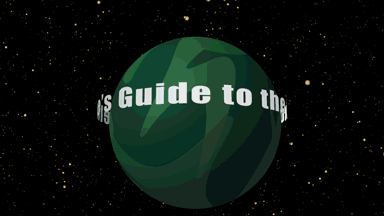Scienceline’s Guide to the Exoplanets: The Melty Diamond
55 Cancri e: Diamonds under a lava ocean
Rahul Rao • May 11, 2020

Your favorite planets, and you didn't even know they existed. [Credit: Curtis Segarra | CC BY-NC-ND 2.0]
The Melty Diamond
55 Cancri e
Discovered by: Barbara McArthur et al
Discovered: 2004
Distance from Earth: ~40 light-years
Size: ~1.9 Earth radii
Mass: ~8 Earth masses
Surface climate: Dust and lava oceans
Habitability for humans: No.
Imagine a terrestrial world whose surface and whose rocky innards are not made largely of oxygen, like the Earth — but rather of carbon. Such a carbon planet would be utterly alien to Earth; if you landed on one, you might find yourself staring at miles-thick layers of graphite, coated over with methane and tar and speckled with volcanoes of diamond.
We don’t know for sure, but many scientists believe that we may have already found such a planet: 55 Cancri e.
55 Cancri e orbits an orange star, larger than a red dwarf but still smaller than the Earth’s Sun. Around that star orbits a much smaller companion — a red dwarf — in addition to five known planets.
We’ve covered a potential carbon planet on this blog before, but that one has a catch; in short, it’s likely that this “planet” is actually just the remnant core of a small star whose outer layers were violently blown away.
55 Cancri e, on the other hand, is unquestionably a planet. It orbits oppressively close to its star — its surface temperature varies between 2500 and 4500 degrees Fahrenheit, even its night side hot enough to melt iron. When the planet was first discovered, its mass was similar to Neptune, and scientists were very uncertain whether they’d found a very hot, very small gas giant or rocky “super-Earth.” Later observations showed that it was probably terrestrial — yet quite alien to Earth.
For instance, in 2016, scientists were able to peer at 55 Cancri e’s atmosphere, the first time anyone was able to look at the atmosphere of a terrestrial world outside the Solar System. They found it was made largely of hydrogen and helium, without the water vapor that you would expect on a more Earth-like world.
55 Cancri e’s surface is almost certainly molten, coated in a global lava ocean thanks to the searing temperatures. You might yourself flying through clouds of dust from volcanoes spewing carbon into the air. But, if 55 Cancri e is a carbon world, then once you dive beneath the surface, you’d find yourself tunneling through crusts made of graphite and hydrocarbons. If the pressures are great enough, you would find yourself diving through dense layers of carbon turned to diamond.